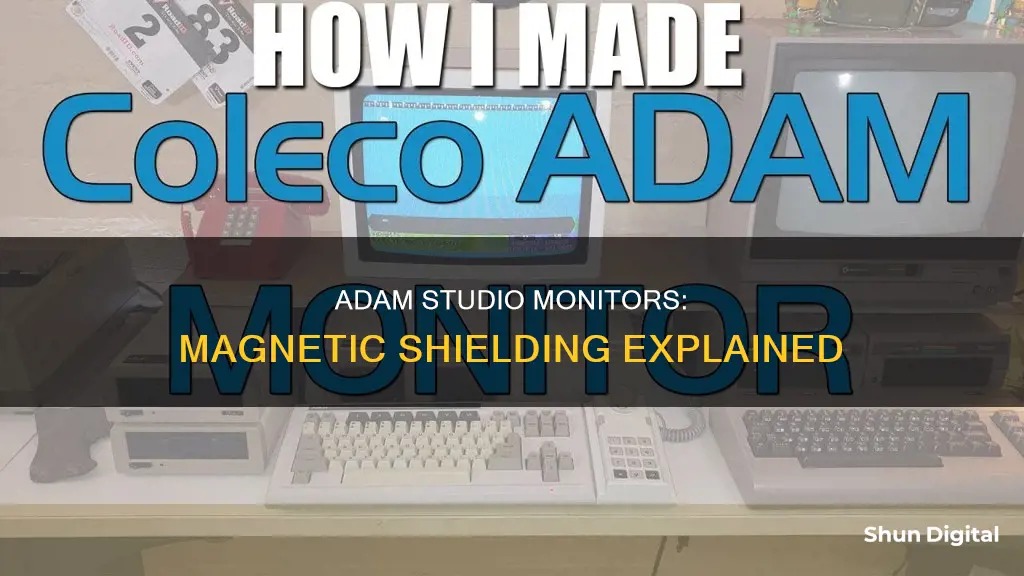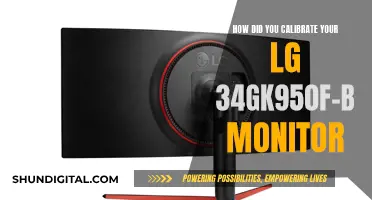
Magnetic shielding was used to prevent magnets in speakers from distorting the picture and colours on CRT monitors. However, with the advent of LCD and LED screens, magnetic shielding has become less relevant. While some users have expressed concerns about potential data loss on HDDs due to unshielded speakers, others have pointed out that it takes a very powerful magnet to disrupt modern HDDs, which already contain strong magnets themselves. Ultimately, the decision to include magnetic shielding in studio monitors may depend on the intended use case and the proximity of the speakers to other electronic equipment.
| Characteristics | Values |
|---|---|
| Reason for magnetic shielding | To prevent distorted images on CRT-based displays |
| Adam studio monitors magnetic shielding | Adam studio monitors are not magnetically shielded |
| Effect on modern displays | Not relevant anymore for modern displays |
| Effect on data on hard drives | It takes a very powerful magnet to disrupt a modern HDD |
What You'll Learn
- Adam studio monitors may not be magnetically shielded because magnetic shielding is no longer relevant for modern computers
- Magnetic shielding was used to prevent magnets in speakers from distorting the picture/colours on CRT monitors
- LCD or LED screens are not affected by magnetic fields
- Modern HDDs contain powerful magnets, so external magnets are unlikely to affect them
- Magnetic shielding is different from Radio Frequency Interference (RFI) shielding, which may be more important for modern speakers

Adam studio monitors may not be magnetically shielded because magnetic shielding is no longer relevant for modern computers
Magnetic shielding was originally designed to prevent magnets in speakers from distorting the picture and colours on CRT (cathode ray tube) monitors. CRT monitors are no longer commonly used, as most modern computers and laptops now use LCD or LED screens, which are not affected by magnets in the same way.
While it is theoretically possible for magnets to damage hard drives, it would take an extremely powerful magnet to do so. Modern hard drives also contain powerful magnets inside them, so the risk of data loss from unshielded speakers is minimal.
Some users have reported issues with interference when using unshielded speakers, but this is more likely to be related to radio frequency interference (RFI) or electromagnetic interference (EMI) rather than magnetic fields. RFI and EMI can be caused by a variety of sources, including nearby radio or cellular masts, and can affect both shielded and unshielded speakers.
In summary, while magnetic shielding was once important for speakers placed near CRT monitors, it is no longer a necessary feature for modern computer setups. The risk of data loss from magnets in speakers is very low, and issues with interference are more likely to be caused by RFI or EMI rather than a lack of magnetic shielding.
IPS Display: How to Check Your Monitor's Panel Type
You may want to see also

Magnetic shielding was used to prevent magnets in speakers from distorting the picture/colours on CRT monitors
Magnetic shielding was used to prevent magnets in speakers from distorting the picture and colours on CRT monitors. CRT monitors are no longer commonly used, as most people now have LCD or LED screens, which are not affected by magnets.
Magnets emit electromagnetic waves that can interfere with electronic equipment, such as a computer's video monitor or a TV. This interference can cause colour distortions on the screen. Speakers placed near a CRT screen can cause these issues due to the magnets in their drivers.
Magnetic shielding was, therefore, necessary to prevent this interference and was particularly relevant for multimedia speakers. However, with the shift to LCD and LED screens, magnetic shielding has become less of a concern for modern computer users.
It is worth noting that while magnetic shielding is no longer essential for speakers, it is still relevant for other applications, such as hard drives, which can be affected by powerful magnets.
Removing Pen Marks: Monitor Cleaning Tips and Tricks
You may want to see also

LCD or LED screens are not affected by magnetic fields
Magnetic shielding was designed to prevent magnets in speakers from distorting the picture and colours on Cathode-ray tube (CRT) monitors. LCD and LED screens are not affected by magnetic fields in the same way as CRT monitors because they don't contain any built-in magnets and don't use electrons to strike their pixels.
LCD screens use liquid pixels, illuminated with a backlight, while OLED screens feature an organic pixel layer with self-illuminating properties. As a result, exposure to a magnetic field won't affect them.
While it's true that magnets can affect electrons, this only occurs when they are moving. In LCD screens, there are no moving electrons except when the image changes, so there can't be any effect with a steady display. Any effect during a moving display will be very small and will disappear once the display is steady again.
It's worth noting that while magnets won't damage LCD or LED screens, they can potentially interfere with other components in electronic devices, such as hard drives, although the magnets would need to be very powerful to cause any issues.
Why You Need a 1440p Monitor: A Detailed Overview
You may want to see also

Modern HDDs contain powerful magnets, so external magnets are unlikely to affect them
The average magnet, or even a relatively strong industrial magnet, would not be strong enough to have any effect on an HDD. To erase data from an HDD, a magnet would need to generate at least 450 pounds of force, which is well beyond the capacity of most magnets, except for some of the strongest neodymium magnets. Additionally, manufacturers are continually developing higher coercivity materials for hard drive platters, making them even more resistant to magnetic force.
It's worth noting that while HDDs are not typically affected by external magnets, other types of older magnetic storage, such as credit card magnetic stripes, audio cassettes, and VHS tapes, can be susceptible to data erasure by neodymium magnets.
The Release of the ASUS VN289QL Monitor: When and What?
You may want to see also

Magnetic shielding is different from Radio Frequency Interference (RFI) shielding, which may be more important for modern speakers
Magnetic shielding and Radio Frequency Interference (RFI) shielding are two distinct concepts, with key differences in their mechanisms and applications.
Magnetic shielding involves using materials like metal alloys to block or redirect magnetic fields. This type of shielding is commonly used to prevent the magnets in speakers from distorting the picture and colours on Cathode Ray Tube (CRT) monitors. However, it is less effective against radio waves and other electromagnetic interference (EMI).
On the other hand, RFI shielding is a more modern and comprehensive approach to blocking a broader range of electromagnetic signals, including radio waves. RFI shielding is achieved by installing barriers made from conductive and magnetic materials, such as copper, aluminium, and steel, around electronic circuits and devices. This type of shielding is essential for protecting devices from interference within the radio frequency portion of the electromagnetic spectrum, which can cause system malfunctions, data loss, and device failure.
The distinction between magnetic shielding and RFI shielding is particularly relevant when considering modern speakers. While magnetic shielding was once important for preventing interference with CRT monitors, the shift to modern display technologies has reduced the need for this type of shielding. Instead, RFI shielding has become more crucial due to the proliferation of man-made radio signals from devices like cell phones, laptops, and wireless routers.
In the case of Adam studio monitors, the lack of magnetic shielding may not be an issue for users with modern displays. However, RFI shielding is still important to prevent interference from nearby electronic devices and radio signals. The effectiveness of RFI shielding depends on factors such as the materials used, the design of the shield, and the frequency of the electromagnetic signals.
To summarise, while magnetic shielding was once a common feature in speakers to prevent interference with CRT monitors, RFI shielding has become more relevant in the modern context due to the increasing number of man-made radio signals. The Adam studio monitors' lack of magnetic shielding may not be a significant issue, but effective RFI shielding is crucial to ensure optimal performance and protect against potential interference.
Mounting Large Studio Monitors: A Step-by-Step Guide
You may want to see also
Frequently asked questions
Magnetic shielding was used to stop magnets in speakers from distorting the picture/colours on CRT monitors. As most people now use LCD or LED screens, this is no longer relevant.
It takes a very powerful magnet to disrupt a modern hard drive, which you won't generally find in a set of speakers.
Shielding prevents external signals from creating unwanted noise within the monitors while they are active.
Adam does build magnetically shielded monitors, but it is unclear whether this applies to any specific model. You can contact them directly to be sure.







